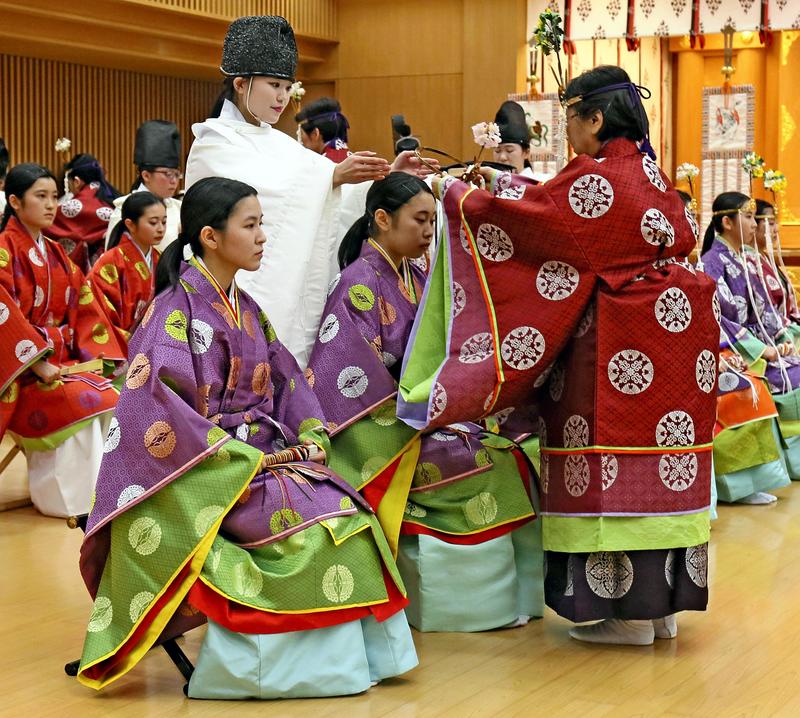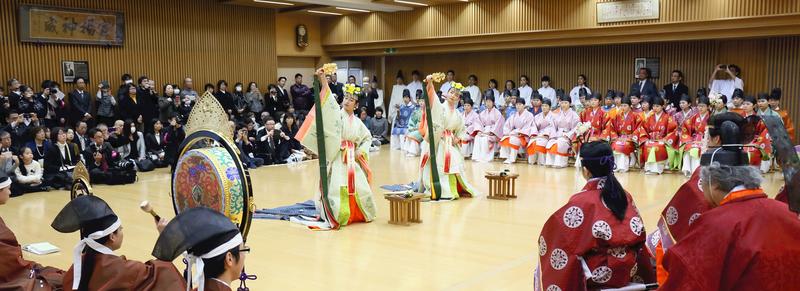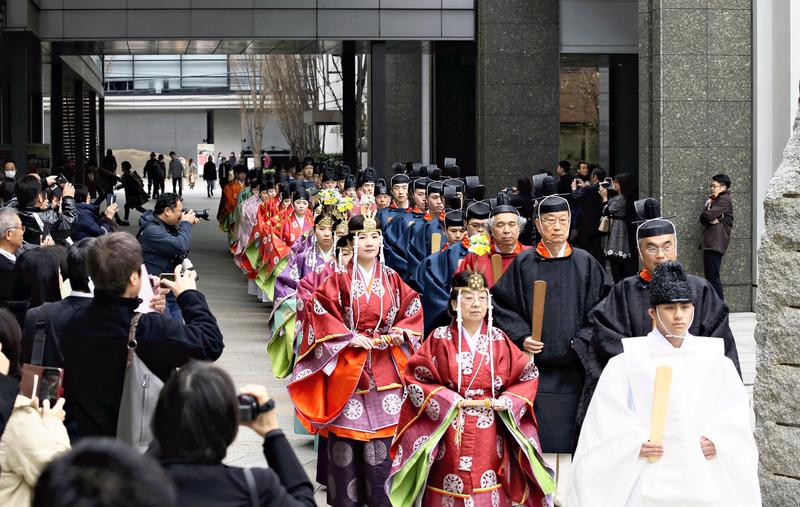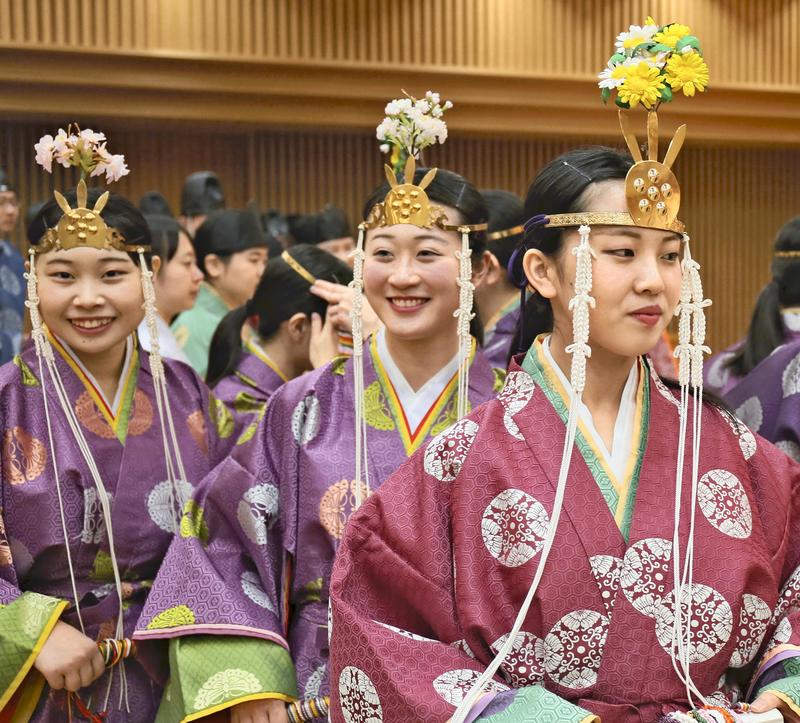
January is a time for coming-of-age celebrations in Japan. This year, the Coming-of-Age Day national holiday fell on Jan. 14, and many local governments and other entities across the nation held ceremonies on or around that date.
Since 2008, Kokugakuin University in Shibuya Ward, Tokyo, has held an annual Shinto-style coming-of-age ritual known as Seijin Kakanshiki. It was originally held among aristocrats in the Nara period (710-784) and the Heian period (794 to late 12th century).
Clad in traditional Japanese attire owned by the university, 27 male students and 27 female students -- who applied and were selected from all of Kokugakuin's faculties -- attended the ritual on Jan. 12. It began with the Kakan no Gi ceremony at which the lecturers and university officials gave the male participants headgear and the female participants hair accessories.

After this, the students who turned or will turn 20 in this academic year and the teaching staff walked in a procession to the shrine on campus, as part of the Hokoku no Gi ceremony. At the final Shukuga no Gi ceremony, other students danced to celebrate the "new adults."
Such rituals were traditionally known as genpuku for men and mogi for women. They were held at the beginning of each year as important rituals of passage to usher people into adulthood.
In recent years, there are more and more coming-of-age ceremonies at which the original meaning of traditional rituals has faded. This prompted some students to express their wish to attend a traditional ceremony, and the university started organizing the solemn occasion.

Some students even attend Kokugakuin University because they want to participate in this ceremony, according to the school.
"The age of adulthood will be lowered to 18 from 20 in April 2022, making how adults should behave a more important question in society," said a university official in charge of public relations. "Coming-of-age ceremonies encourage attendees to be more self-aware as new adults, so they're significant rituals."
Chikako Miyagawa, a 20-year-old sophomore in the Faculty of Shinto Studies, was among the attendees.

"I became aware of my responsibilities as an adult when I felt the weight of the attire and how solemn the ritual was," Miyagawa said.
The university is one of the few private colleges at which students can obtain qualifications to serve as a chief priest, among other positions, at Shinto shrines.
Its parent body was founded in 1882. The ritual is not open to the public, but the procession on the campus can be seen from a nearby public road.

(New Japan, Old Japan is a series exclusive to The Japan News)
Read more from The Japan News at https://japannews.yomiuri.co.jp/







